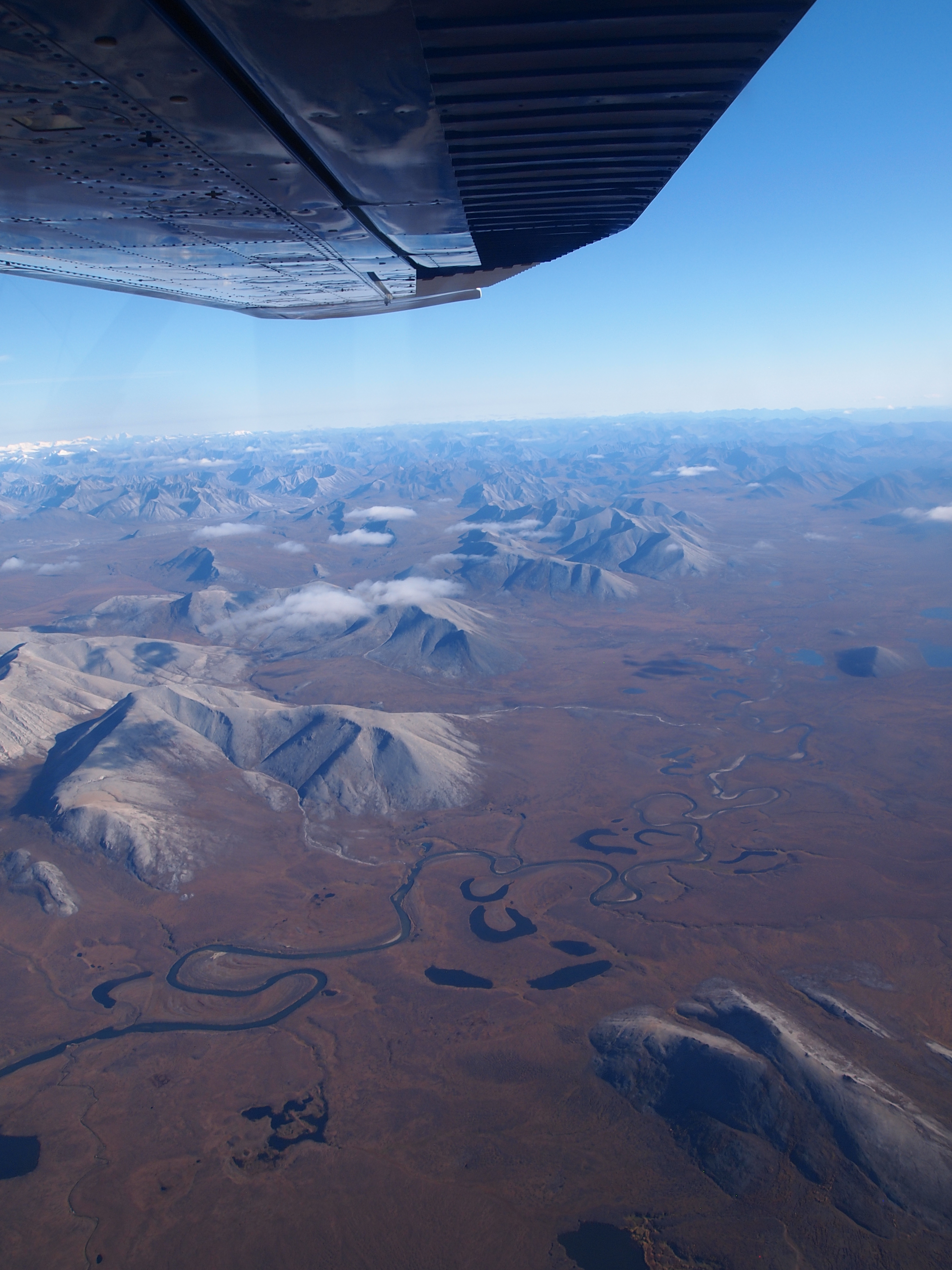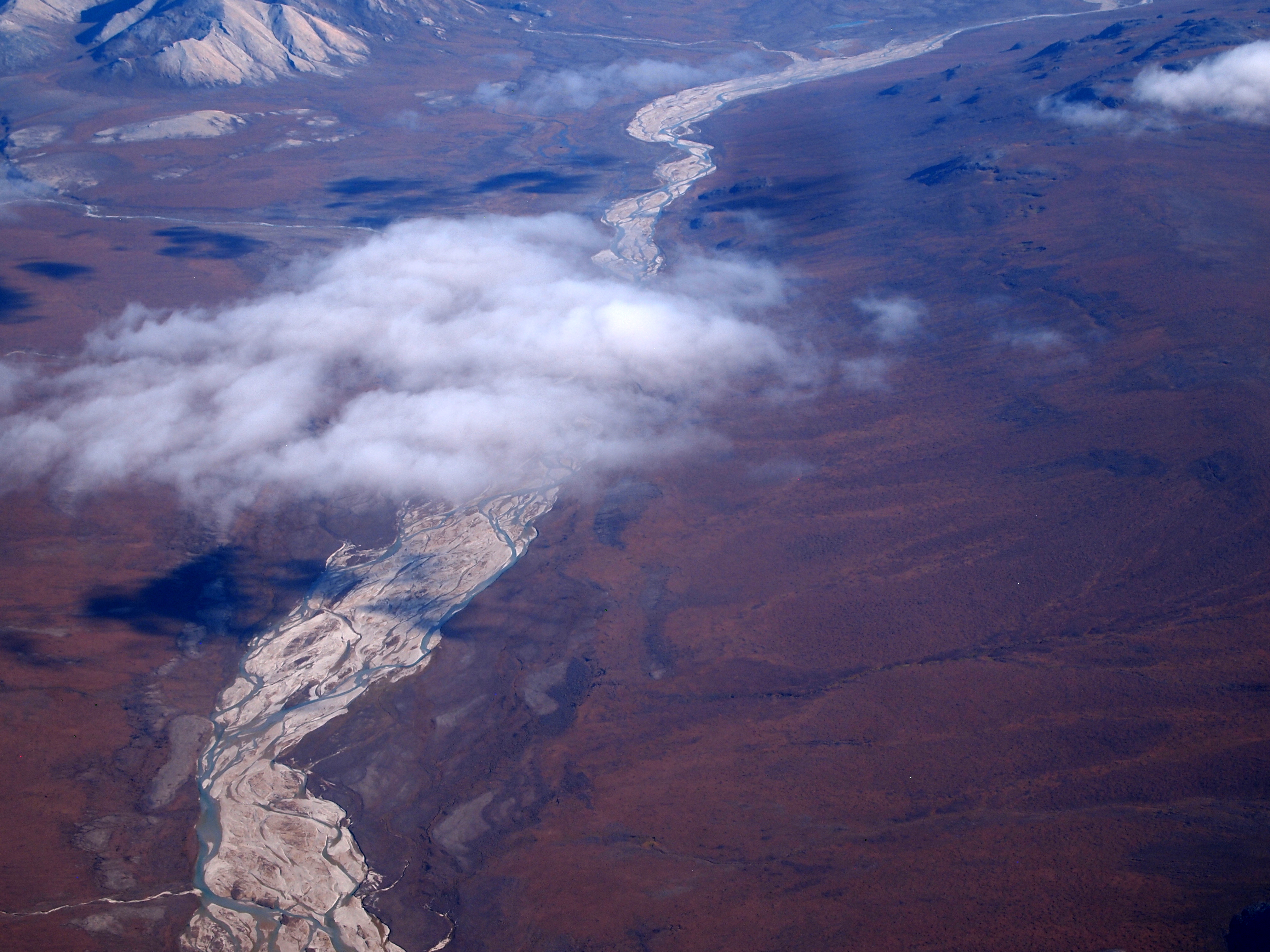On a clear Friday afternoon, NPS staff flew over Noatak National Preserve at 9500 ft to monitor caribou calves previously collared by the Alaska Department of Fish and Game. Because they flew at such a high elevation, the crew was able to also see the snow-capped peaks in Gates of the Arctic National Park and Preserve and the canyons in Cape Krusenstern National Monument. Using a radio telemetry device, NPS staff and a pilot from a local backcountry flying service cruised at a high altitude and monitored radio frequencies for the collars. During their seven hour flight, they enjoyed calm, clear weather and peak autumn colors!
Ideal Weather
It was the perfect day for flying! Almost no clouds in sight, and practically no winds! The crew got rather lucky. The weather in northwest Alaska is extremely unpredictable, and it’s not unusual for flights to be delayed due to weather. Because the flight was so long, SCA intern Lauren was initially worried about airsickness. Flying at higher altitudes generally decreases the likelihood of turbulence, but having mild weather always helps. “I definitely prepared for the worst, but I’m glad everything turned out better than expected!” says Lauren.
Autumn Colors
With few clouds covering the landscape, the crew was able to see the peak autumn colors across the tundra. Hues of gold, orange, scarlet, and even purple were scattered across the foothills of the Baird and Delong Mountains. In the distance, the snow-capped mountains in Gates of the Arctic were visible. Alaskans call the first snow on mountain peaks “termination dust,” because it signifies the end of the warm season. There was no snow yet in the mountains of Noatak National Preserve, but the snow in Gates of the Arctic suggests that we are only a few weeks behind!
Rolling Rivers
SCA Intern Lauren was amazed at how the rivers and streams carve into the mountains and hills of the tundra. Some were turquoise, others rusty orange! “It was exciting to photograph the contrast between the colors of the water and tundra! I especially love the orange streams full of iron deposits.” The pilot noted that the Noatak River still showed high water levels, a trend that persisted throughout the summer. Visitors planning future float trips in the area should be wary of high water levels.

Tracking the Caribou
As part of a caribou calf mortality study, the crew searched for caribou calves previously collared by the Alaska Department of Fish and Game using radio telemetry equipment. These newborn calves, or neonates, were collared shortly after birth at the calving grounds up north. “It’s incredible how far these neonates disperse with their mothers across the landscape, despite all originating from the same small area. This landscape is not forgiving, either! This tundra is tortuous, defined by mountains ridges, hundreds of rivers, and dense tussock grasses,” says NPS Biological Technician Sara. The crew found that many of the calves were still spread out across the parklands, so the big group migration south is not quite occuring yet. These collared calves belong to the Western Arctic Herd—the largest caribou herd in Alaska. If the coded telemetry receiver detects any mortalities, the crew marks the exact latitude and longitude of the signal so that the Alaska Department of Fish and Game can return to retrieve the collars in a helicopter.
A Season Less Travelled By
It’s popular for visitors to travel to the Arctic parklands during the summer months, but late August and early September offer opportunities that summer can’t. The 24-hour sun is an incredibly unique experience, but the northern lights won’t be visible until the days shorten again. The temperatures are chillier, but there are also significantly less mosquitoes! The summer offers wildflowers galore, but autumn features radical color changes as plants prepare for the long, cold winter. Every season in the Arctic has something unique to offer visitors!


